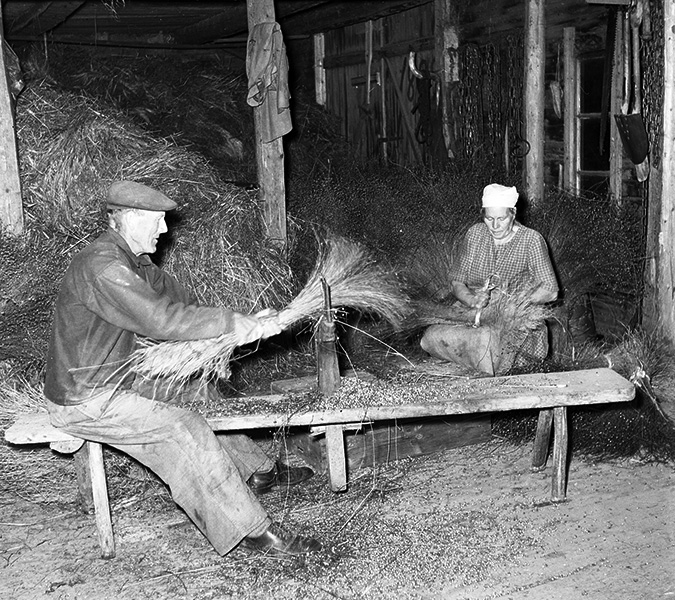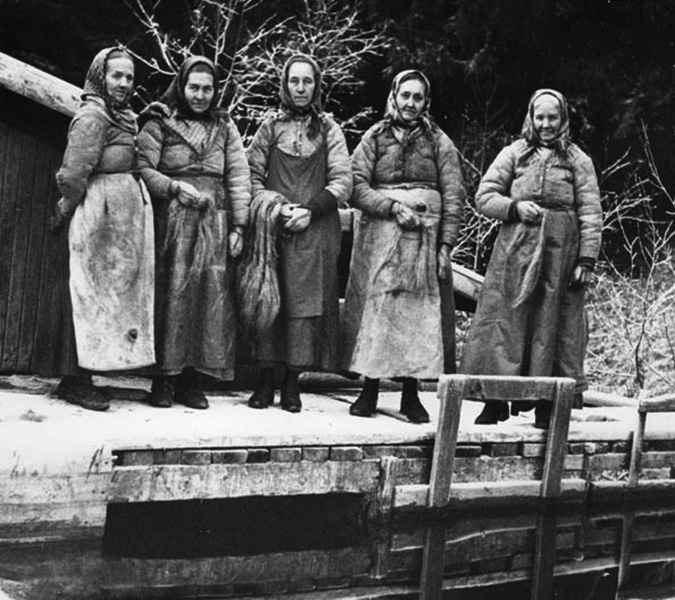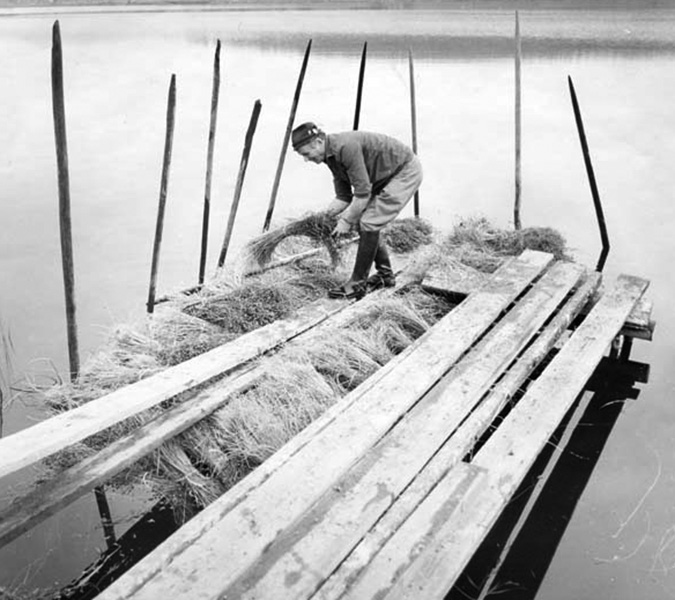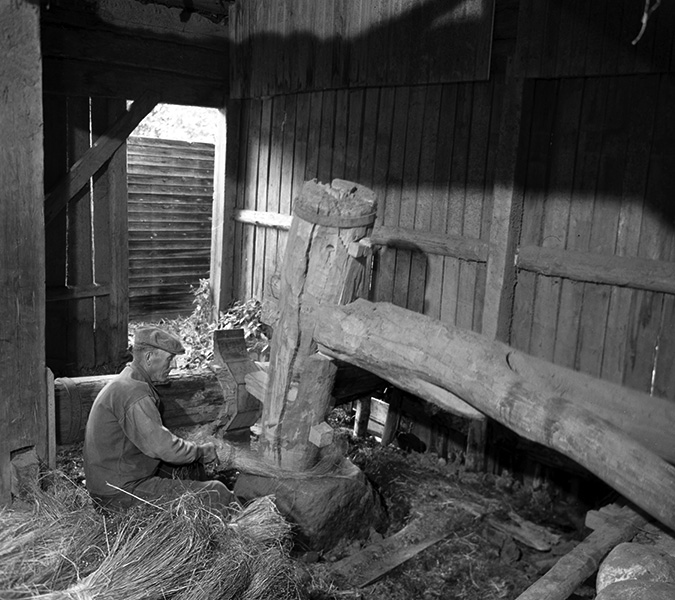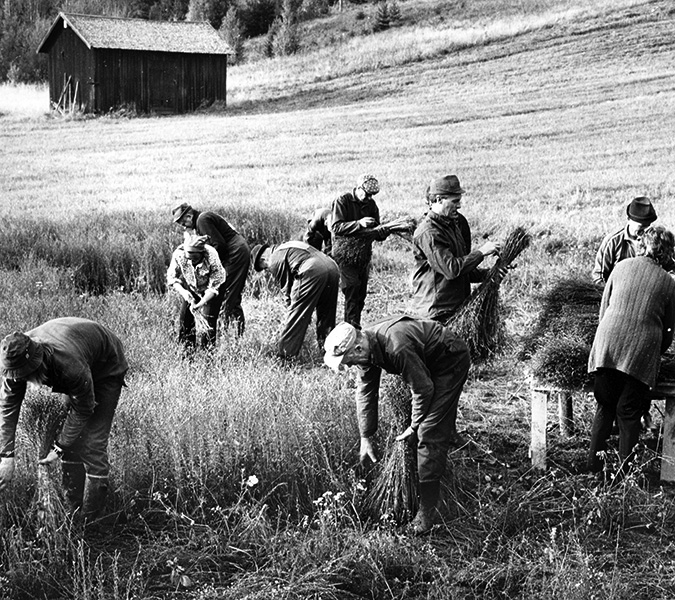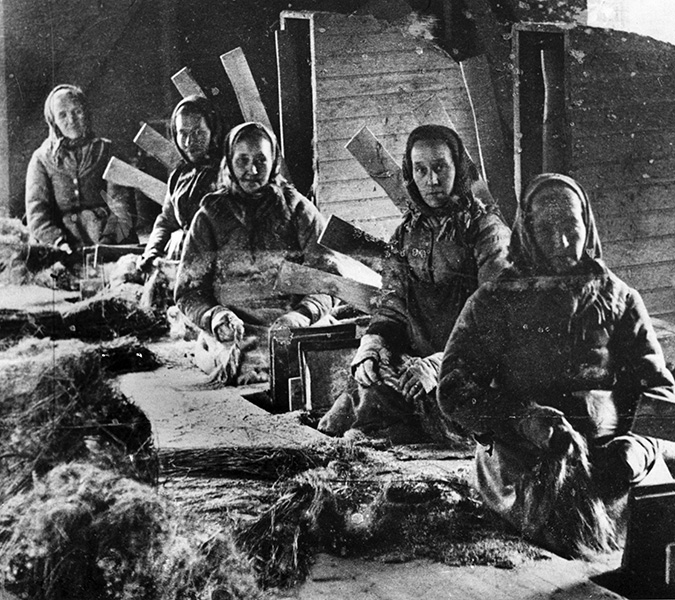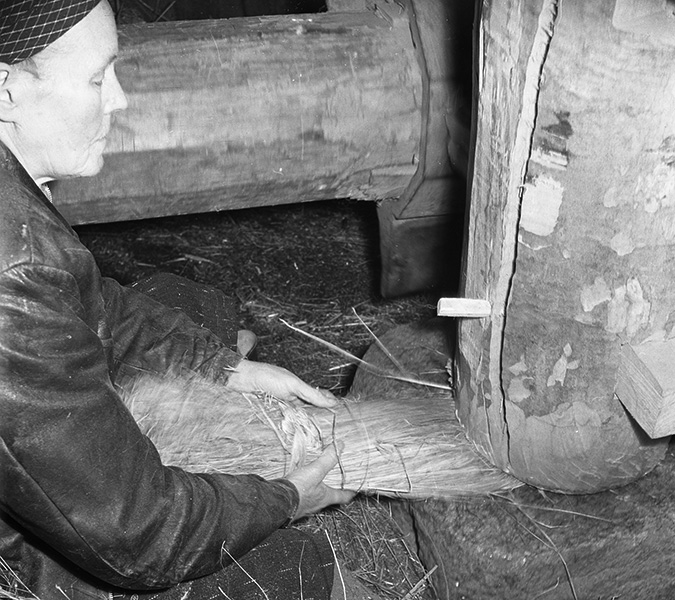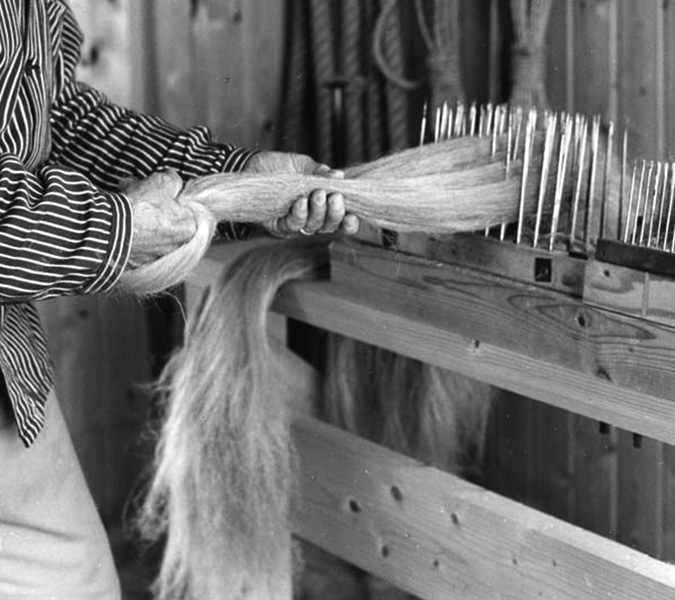Our History
Flax cultivation in Hälsingland was of great significance, particularly during the 17th and 18th centuries. Large areas were cultivated with flax, and significant technological advancements were made in flax processing. Around the year 1700, the vicar Olof Johan Broman in Hudiksvall came up with the idea of using water wheel power for two of the heaviest tasks in flax preparation, from harvest to spinning. These two tasks are scutching and heckling.
The idea was spread and utilized throughout Hälsingland, leading to the establishment of flax processing mills powered by waterwheels across the region. At its peak, there were about 1000 flax barns and scutching mills in Hälsingland, with approximately 10 of them located in Trolldalen here in Växbo.
In Trolldalen, there is a unique collection of buildings preserved since the time when linen was crucial for the prosperity of Hälsingland. Here, there are flax barns and scutching mills powered by waterwheels, as well as flax sheds and an overnight cottage. The youngest of these buildings is the scutching mill built in 1904, replacing an older scutching mill and flax barn. The other buildings are older, with several likely dating back to the early 1800s. Additionally, Trolldalen also has a linen sauna, a water-powered mill, and a couple of small cottages. A combined barn and scutching mill is a replica of an older building that was torn down long ago.
At the top of Trolldalen is Nydammen, constructed as a water reservoir for the operation of the so-called Storskäkten (large scutching mill). It was one of the first scutching mills in Trolldalen, built in the early 1800s. It was built in two stories, and the size of the building gave it its name. Today, Nydammen is primarily used as a bathing spot.
Hälsingland has a favorable climate for flax cultivation. This, combined with substantial knowledge and early harvesting, has made our Hälsinge linen widely known worldwide. In Flor village in Mo, just outside Söderhamn, a linen factory was established in the 1700s, producing damask tablecloths and napkins for most of Europe's courts. Sailcloth for the large sailing ships of the time, linen canvas, and other linen products were also manufactured in Flor. The operations there lasted for over 100 years and required large quantities of raw materials. Flax was cultivated not only in Hälsingland but also in other regions from Uppland in the south to Ångermanland-Jämtland in the north.
Flors linen factory also operated spinning schools to produce the finest linen yarn possible. This laid the foundation for a highly esteemed linen culture with high-quality products as its hallmark. Linen cultivation also provided a significant income for the farmers and their spinning women, which clearly contributed to the prosperity of the Hälsingland farmers. Many grand houses and a fair amount of silver are the results of the Hälsinglanders' flax cultivation.
With the advent of cotton in the Swedish textile market in the 1800s, the importance of Swedish flax cultivation declined. Flax processing in Trolldalen continued until the mid-1950s. By then, cotton and synthetic fabrics had become widespread and competed with linen, which suddenly felt outdated. The Swedish textile industry was dismantled and moved to countries with cheaper labor.
In Växbo, there were barely 30 years without linen production before ten villagers, led by Rolf Åkerlund, decided to create a new enterprise around linen – a historical heritage for us from generations past. It took a great deal of enthusiasm and perseverance when they started a modern flax spinning mill without any experience in the industry other than their mothers' and grandmothers' spinning on the old spinning wheels. Växbo Lin opened in 1990, and since then, we have had linen production in Växbo again.
